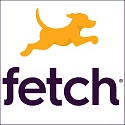
The good news is, prices on its store brand products are lower than competitors. The bad news is, prices on the brand-name products it carries aren’t. The good news is, a typical store opening generates excitement and “iPhone-length lines“. The bad news is, it can be “completely crickets” after that. And the good news is, it’s halfway toward its goal of opening 100 stores in its first year. But the bad news is, it’s already slowing down the pace of new store openings and walking away from several previously-announced new locations.
That’s the story so far for Lidl, the German-owned discount grocery store that came to America with a splash earlier this year. The chain is most often compared to ALDI, another German import, since they both run smaller stores with a limited selection, promising fewer frills and lower prices than you’ll find just about anywhere else.
That prompted plenty of interest, and bold predictions about disrupting the entire grocery industry, as Lidl opened its first ten U.S. stores in June. It’s since opened 47 stores in six East Coast states, and each opening is marked with a big grand opening celebration.
Shoppers largely agree that the stores are nice and the selection is good. But what about Lidl’s main selling point – the prices?
A new study by Kantar Retail shows that the answer is a bit mixed. Kantar compared prices between Lidl and Walmart on both name-brand and store-brand products. Among branded products, Lidl’s prices were notably lower on a handful of items – a can of Red Bull energy drink that sold for $1.98 at Walmart sold for just 62 cents at Lidl. But Walmart had better prices on other items, like a $3.48 pint of Ben & Jerry’s ice cream that Lidl sold for $4.28. Most other items were priced about the same, which is to be expected, since other analysts have noted that competitors tend to lower their prices when Lidl enters a market.
But Lidl tends to win on price when it comes to store-brand products, which make up the majority of its inventory. Kantar compared the prices of 15 private-label products sold at Lidl and Walmart. Two were priced the same, and Lidl had lower prices on all of the others.
“Price gaps such as these will redefine what shoppers perceive is a ‘good price’ for a given item (similar to what Walmart did decades ago),” Kantar concluded. “As Lidl opens more stores and expands its reach, this dynamic will extend to more of the U.S. market.”
But is Lidl still on track to open enough stores to have that kind of impact?
After a flurry of store openings, with new Lidl locations opening nearly every week, there have been no new store openings so far this month and no announcements of upcoming openings. The only announcements about future stores, have involved plans not to pursue planned openings.
Retail analysts have pointed out that many Lidl stores are suffering from lackluster sales after the grand opening excitement dies off. Several stores that were in the planning stages have been scrapped, and Lidl is now considering smaller sites in more urban markets than the small-town locations it’s opened so far in Georgia, North and South Carolina, Virginia, Delaware and New Jersey.
Lidl representatives insist they’re just recalibrating, and are well on their way to expanding across the country.
So if you’ve visited a new Lidl but haven’t been back in a while, Lidl wants to make sure you don’t give up on it. And if Lidl hasn’t made it to where you are yet – the success of its existing stores could ultimately determine if it ever does.
Image source: Lidl










